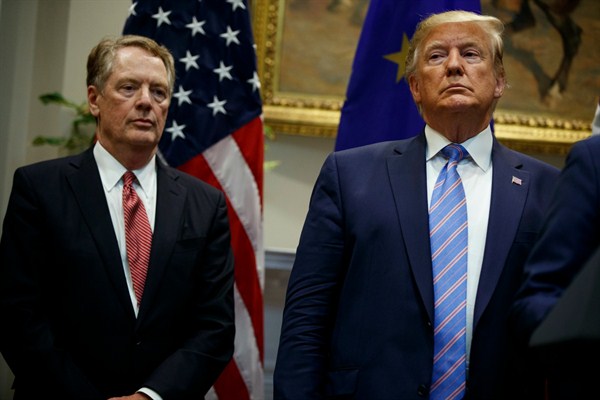The truce in the U.S.-China trade war didn’t last long. Just a month after agreeing to restart negotiations on the sidelines of the G-20 summit in Osaka, Japan, President Donald Trump announced another escalation last week. Unless something happens, or Trump changes his mind—which is always a possibility—U.S. Customs and Border Protection will begin collecting an additional 10 percent tariff on the remaining $300 billion in imports from China on Sept. 1. And this time, consumers would feel the pain because the tariffs will hit clothing, shoes, electronics and other everyday items that had previously been spared. To top it off, the Treasury Department on Monday officially labeled China a currency manipulator.
While virtually everyone across the political spectrum, as well as policymakers around the world, agree that China’s trade policies and practices are problematic, the strategy behind the trade war has always been rather opaque, to put it mildly. Is it about getting an agreement that results in Chinese economic reforms? Or is it about keeping tariffs and decreasing the degree of integration between the two economies? In justifying the new tariffs, Trump blamed China for not resuming large purchases of American agricultural products and not stemming the flow of fentanyl to the United States, as he claimed President Xi Jinping had promised to do in Osaka. Yet the timing and context of this latest escalation are still mystifying.
To recap briefly, Trump put 25 percent tariffs on $50 billion in Chinese imports and 10 percent on another $200 billion worth of goods last year. Then, this past spring, after Beijing reneged on a number of commitments that American negotiators thought had been agreed, the White House raised the 10 percent tariffs to 25 percent and threatened more tariffs on the remaining $300 billion in U.S. imports from China if negotiators could not reach an agreement. The products hit with tariffs to date have mostly been industrial goods and other intermediate imports, so consumers did not see a direct or immediate impact. But they will in September if the tariffs go into effect on the broad range of consumer goods of which China is a major supplier.

